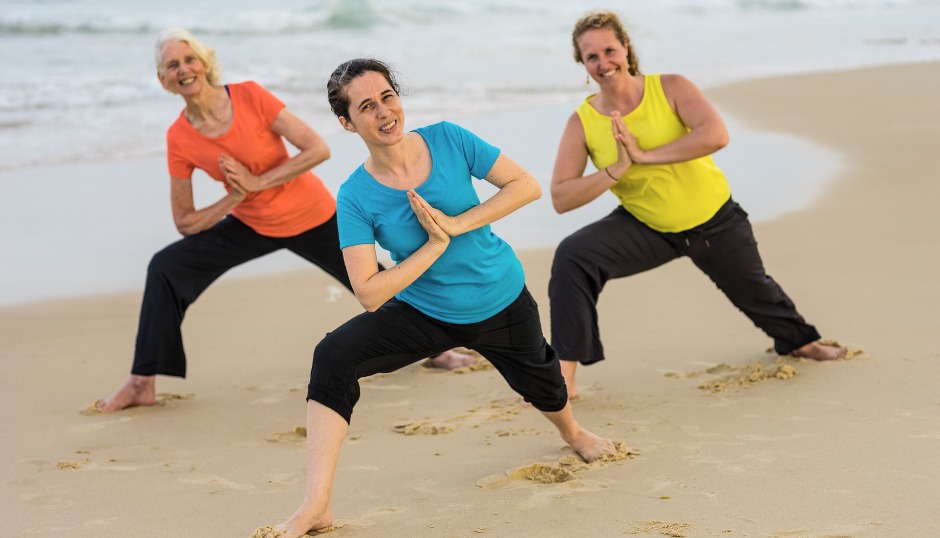Sometimes when I am instructing the class how to move into the Warrior 2 pose I look around the yoga room dotted with yogis of varying flexibility and strength and marvel at how many variations one set of instructions can produce. For example some try to push themselves to reach what they think the pose should look like, which can yield varying results, or those who, through listening to their body, find comfort, ease and support in the pose.
For an optimal Warrior 2 pose there are three main areas that need to be taken care of: feet placement, pelvis placement and shoulder placement.
The placement of the feet, or in other words, where the feet are in relation to each other and how wide our stance is, will have a determining effect on the knees, the pelvis, the spine and maybe even the shoulders and neck. In this article we will investigate the impact of our stance:
Foot alignment: Firstly, let’s look at the two instructions for the feet. One instruction is to line the front heel up with the back arch, while the other instruction is heel to heel. There is not a great deal of difference between them but heel to heel is the one I favour because it allows a more natural alignment of the pelvis.
Weight distribution: The weight should be evenly distributed between both feet. If we take the weight more into the front foot than the back foot, which is often the case, our torso will tend to lean forward. Within each foot the weight should be evenly placed through the front and back and side to side. Too much weight placed in any of these areas on a regular basis will causes unbalanced development of our supporting musculature around the knees and hips.
Length of stance: The usual measurement of how wide to take the feet is pretty nebulous, sometimes the instruction is to align the feet with the hands when the arms are outstretched but commonly it is said from 3 – 4 feet according to how open our hips are. But how do we actually tell where our feet need to be? Of course, the first thing to look for is comfort: are we going past our comfort level, are we feeling pain? Secondly do we feel supported and steady? Thirdly when we bend our front knee to a comfortable lunge is our shin perpendicular to the floor? If we are too wide in our stance then the knee won’t reach forward far enough and the shin will angle back towards the torso, and if our stance is too narrow the knee will track forward of the ankle causing a slant of the shin in the other direction.
Compensations: The fourth cue is more subtle and to do with compensating. We need to feel and look into whether our pelvis is tilting. If we lunge too deeply the muscles that are stretching will reach their limit and the pelvis will tilt anteriorly. This means the top of our pelvis will drop inwards and down and the base of the pelvis (sitting bones/tail bone) will tilt backwards and up. AND if we see that we have done this and stay in the same overstretching lunge but try and jam the pelvis back into alignment we will gradually over time (or maybe not so gradually) cause pain and problems in the sacroiliac joint and/or lower back. IF however, we leave the pelvis tilted but try and bring the torso up right we will cause overarching and compression in the lower back. Either compensation will cause tension and prevent the great energy flow that the pose offers.
So, the rule of thumb is to learn what to look for and learn what to feel for. Then the pose can grow from a solid base and your strength and flexibility will gradually extend and you will reap the benefits of a strong stable opening of the pelvis and chest, allowing the energy to flow freely, nurturing every part of your body while enjoying a clear and focused mind.
It’s certainly a wonderful pose and worth investigating to get the most possible benefit from! Find the full Warrior 2 pose instructions here.
By Vrndavan Dasi
Founder and Principal of Veda Yoga Teacher Training
